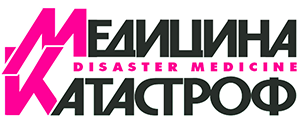Пискунова С.Г.1, Шаршов Ф.Г.1, Прометной Д.В.2, Вовк Ю.И.3, Крымшамхалова С.Д.1 Региональная модель организации оказания реанимационно-консультативной помощи детям на примере Ростовской области
УДК 614.8:053.2(470.61)
С. 33–37
1 ГБУЗ «Областная детская клиническая больница», Ростов-на-Дону
2 ФГБОУ ВО «Ростовский государственный медицинский университет»
3 ГБУ «Областная клиническая больница», Ростов-на-Дону
Проанализирована эффективность функционирования региональной модели оказания реанимационной-консультативной помощи детям на территории Ростовской области после директивного внедрения в практическую деятельность дистанционных технологий консультирования.
Охарактеризована работа трёхуровневой системы медицинских организаций по оказанию реанимационно-консультативной помощи детям. Приведены данные о структуре консультативно-выездной работы с детским населением в Ростовской области в 2012–2017 гг. Сделан вывод, что оптимизация реанимационно-консультативной работы позволила контролировать в одном центре все случаи госпитализации пациентов педиатрического профиля с неотложным состоянием на территории Ростовской области.
Ключевые слова: дети, дистанционное консультирование, реанимационно-консультативная помощь, реанимационно-консультативный центр Областной детской клинической больницы, региональная модель, трёхуровневая система медицинских организаций
СПИСОК ЛИТЕРАТУРЫ
1. Баиров Г. А.Срочная хирургия детей. СПб.: Питер Пресс, 1997. С.11–14.
2. Современная неотложная помощь при критических состояниях у детей / Макуэй-Джонс К., Молинеуке Э., Филлипс Б., Шабалов Н.П.. М.: Медпресс-информ, 2009. С. 15–34.
3. Кичин В.В., Сунгуров В.А., Рябов С.В. Анестезиологическое обеспечение и интенсивная терапия пострадавших с тяжелой сочетанной травмой // Анест. и реаниматол. 2007. №4. С. 23—27.
4. Sefrin P., Brandi M., Kredel M. Preclinical care of childrenwith traumatic brain injury // German Medical Science. 2004.Vol. 2. Р. 1—11.
5. Семенова Ж.И. Тяжелая черепно-мозговая травма у детей. Догоспитальный этап // Медицинская газета. 2006.№8.
6. Организация специализированной медицинской помощи детям, пострадавшим в результате дорожно-транспортных происшествий на территории Московской области / Суворов С.Г., Езельская Л.В., Розинов В.М. и др. // Анест.и реаниматол. 2009. №1. С. 34—36.
7. Шмаков А.Н., Кохно В.Н. Критические состояния новорожденных (технология дистанционного консультирования и эвакуации). Новосибирск, 2007. 168 с.
8. Parr M.J., Joseph A.P. Resuscitation for major trauma // Resuscitation. 2001. Vol. 48. P. 1—3.
Piskunova S.G.1, Sharshov F.G.1, Prometnoy D.V.2, Vovk Yu.I.3, Krymshamkhalova S.D.1 Regional Model of the Organization of Resuscitation and Counseling Assistance to Children on the Example of the Rostov Region
UDK 614.8:053.2(470.61)
PP. 33–37
1 State Budgetary Institution of Rostov Region “Regional Pediatric Teaching Hospital”, Rostov-on-Don
2 Federal State Budgetary Educational Institution of Higher Education «Rostov State Medical University», Rostov-on-Don
3 State Budgetary Institution of Rostov Region “Regional Clinical Hospital”, Rostov-on-Don
The effectiveness of the regional model of provision of resuscitation and counseling services to children in the Rostov region has been analyzed after the directive introduction of remote consulting technologies into practice.
The work of the three-level system of medical organizations which provide resuscitation and counseling services to children is described. Data on the structure of consultative-visiting work with children in the Rostov region in 2012–2017 is given. It is concluded that optimization of resuscitation and consulting work allowed to control all cases of hospitalization of pediatric patients with an emergency condition at the territory of the Rostov Region in one center.
Key words: children, regional model, remote counseling, resuscitation and counseling, resuscitation and counseling center of the regional children’s clinical hospital, three-level system of medical organizations
REFERENCES
1. Bairov G.A., Srochnaya hirurgiya detej, (Emergency pediatric surgery), St. Petersburg, Piter Press Publ., 1997, pp. 11–14 (In Rus.)
2. McWay-Jones K., Molineuke E., Phillips B., Shabalov N.P., Sovremennaya neotlozhnaya pomoshch’ pri kriticheskih sostoyaniyah u detej, (Modern emergency care in children’s critical conditions), Moscow, Medpress-inform Publ., 2009, pp. 15–34 (In Rus.)
3. Kichin V.V., Sungurov V.A., Ryabov S.V., (Anesthetic management and intensive care for patients with severe concomitant injury), Anesteziologiya i reanimatologiya, 2007; 4: 23–27 (In Rus.)
4. Sefrin P., Brandi M., Kredel M., (Preclinical care of childrenwith traumatic brain injury), (German Medical Science), 2004; 2: 1—11.
5. Semenova Zh.I., (Children’s severe craniocerebral injury, Prehospital phase), Medicinskaya gazeta, 2006; 8 (In Rus.)
6. Suvorov S.G., Ezelskaya L.V., Rozinov V.M. et al., (Organization of specialized medical care for the children injured in road accidents in the territory of the Moscow Region), Anesteziologiya i reanimatologiya, 2009; 1: 34—36 (In Rus.)
7. Shmakov A.N., Kohno V.N., Kriticheskie sostoyaniya novorozhdennyh (tekhnologiya distancionnogo konsul’tirovaniya i ehvakuacii), (Critical states of new borns (technology of distant consultation and evacuation)), Novosibirsk Publ., 2007, 168 p. (In Rus.)
8. Parr M.J., Joseph A.P., (Resuscitation for major trauma), (Resuscitation), 2001; 48: 1—3.
